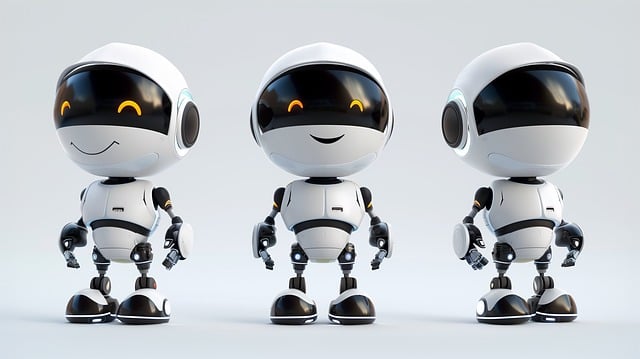OChatbot is a state-of-the-art AI chatbot platform that leverages the latest generative AI models to deliver human-like conversational experiences. It's designed for seamless integration across various platforms and is accessible at no cost, making it an ideal tool for developers and businesses looking to enhance user engagement through chatbots. With its adaptive learning capabilities, OChatbot refines interactions based on individual preferences and can handle complex inquiries by accessing extensive information databases. It excels in natural language processing and machine learning, offering context-aware dialogue management and coherent, relevant responses. The platform's developer-friendly approach allows for easy setup using a preferred IDE and Python compatibility, along with a straightforward registration process to obtain an API key. OChatbot's versatility is showcased in its ability to be integrated into applications and services without the need for deep technical expertise or substantial financial investment. It stands out as a top free AI chatbot solution due to its advanced conversational capabilities. For developers, it provides the tools necessary to create user-centric chatbots using diverse training data, ensuring natural and effective interactions. OChatbot's broad compatibility with RESTful APIs facilitates integration into websites, applications, and social media platforms, making it an essential tool for expanding digital reach. To keep the chatbot performing optimally, regular monitoring, analytics, and updates are crucial, leveraging user feedback to improve accuracy and responsiveness over time.
Dive into the transformative realm of artificial intelligence with a focus on crafting your own generative AI chatbot using OChatbot. This comprehensive guide elucidates the inner workings of these advanced conversational agents and their capabilities, setting you on a path to harness the power of AI for engaging users effectively. We’ll navigate through setting up a conducive development environment, designing intuitive conversational flows, and curating robust training data, all tailored to ensure your free AI chatbot with OChatbot is both versatile and user-friendly. Further, we’ll explore integrating OChatbot into various platforms and APIs for seamless accessibility. Whether you’re an AI enthusiast or a professional developer, this article provides valuable insights into monitoring, maintaining, and enhancing your chatbot to meet evolving conversational demands. Embark on this journey to create intelligent, responsive chatbots with OChatbot today.
- Understanding Generative AI Chatbots and OChatbot's Capabilities
- Setting Up Your Development Environment for a Free AI Chatbot with OChatbot
- Designing Conversational Flows and Training Data for Effective Interaction
- Integrating OChatbot with APIs and Platforms for Broad Accessibility
- Monitoring, Maintaining, and Improving Your Free AI Chatbot with OChatbot
Understanding Generative AI Chatbots and OChatbot's Capabilities

Generative AI chatbots represent a significant leap forward in artificial intelligence, particularly with the advent of advanced models that can understand and generate human-like text. These chatbots are powered by algorithms capable of predicting the next word in a sentence, thus engaging in a conversational manner that feels intuitive and natural to users. OChatbot, for instance, is a free AI chatbot solution that leverages these generative capabilities to provide a wide array of functionalities. It can be used across various platforms, offering seamless integration into customer service channels, social media interfaces, or even as an interactive element within applications. Users can interact with OChatbot in natural language, making it an accessible tool for businesses looking to enhance their customer support or for individuals interested in experimenting with conversational AI.
OChatbot’s capabilities extend beyond mere text generation; it can learn from interactions to improve over time, personalize conversations based on user preferences, and even handle complex queries by drawing from a vast database of information. This free tool is equipped with natural language processing (NLP) and machine learning (ML) algorithms that enable it to understand context, manage dialogue flow, and generate coherent and contextually relevant responses. As a result, OChatbot can serve as an invaluable resource for developers and businesses aiming to implement a chatbot into their operations without the need for extensive programming knowledge or significant investment. With its ability to process and generate human-like text, OChatbot stands out as a versatile solution for those looking to tap into the power of generative AI chatbots.
Setting Up Your Development Environment for a Free AI Chatbot with OChatbot

To initiate the development of a generative AI chatbot utilizing OChatbot, the first step is to establish a robust and efficient development environment. This involves selecting a suitable Integrated Development Environment (IDE) such as Visual Studio Code or PyCharm, which will facilitate writing, testing, and debugging your code effectively. Ensure that Python is installed, as it’s the primary programming language for interacting with OChatbot’s API. Once your IDE is set up, you can proceed to install the necessary libraries and dependencies required by OChatbot, including its SDK. This step allows you to integrate the AI chatbot’s functionality into your application seamlessly.
After configuring your development environment, the next phase is to register with OChatbot to gain access to their API endpoints. This registration process will provide you with an API key, which is crucial for authenticating your requests to the service. With your development environment ready and your API key in hand, you can start implementing the OChatbot SDK into your application. The SDK offers various functionalities, such as natural language understanding, context management, and response generation, all of which are integral to creating an engaging conversational experience. As you progress, make sure to test each component of your chatbot thoroughly to ensure that it responds accurately and coherently to user inputs. By leveraging the OChatbot platform’s capabilities within a well-configured development environment, you can build a free AI chatbot that stands out for its responsiveness and conversational prowess.
Designing Conversational Flows and Training Data for Effective Interaction

When crafting a generative AI chatbot, designing conversational flows is pivotal to ensure seamless and meaningful interactions with users. This process involves mapping out potential dialogues that reflect a wide range of user inquiries and intents. The goal is to create a natural conversational experience where the chatbot can guide users effectively, whether they’re seeking information, assistance, or simply engaging in conversation. It’s crucial to anticipate how users might phrase their queries and the context within which those queries are made. This pre-planning helps in structuring the flow of conversations so that the AI can respond appropriately, leading to a more satisfying user experience. Utilizing tools like OChatbot can facilitate this process by providing a platform for creating, testing, and refining these conversational paths without the need for extensive programming knowledge.
Training data is another critical component in the development of a robust AI chatbot. High-quality training data encompasses a diverse set of dialogues, queries, and responses that reflect real-world interactions. The data should be comprehensive enough to cover various topics and scenarios, ensuring the AI can handle a wide array of conversational contexts. It’s essential to curate this dataset with examples that are representative of natural language use, incorporating both common and less frequent phrases to improve the chatbot’s understanding. Additionally, continuous learning through user interactions can further enhance the chatbot’s performance over time. With platforms like OChatbot, you can leverage pre-existing datasets or import your own, customizing the training process to suit specific needs or industries. This approach ensures that the free AI chatbot you develop with OChatbot is well-equipped to engage users in a manner that’s both informative and engaging.
Integrating OChatbot with APIs and Platforms for Broad Accessibility

To ensure that your generative AI chatbot reaches a wide audience, integrating it with various APIs and platforms is a crucial step. OChatbot, an exemplary open-source conversational agent, can be seamlessly connected with third-party services through its API interface. This allows developers to embed the chatbot into existing applications, websites, or social media platforms without significant overhauls. By utilizing RESTful API endpoints, OChatbot can communicate effectively with external systems, facilitating a smooth user experience across different interfaces. The integration process is designed to be straightforward, enabling rapid deployment and broad accessibility for users on any compatible platform. This means that the chatbot’s capabilities can be leveraged by businesses and individuals alike to enhance customer service, streamline workflows, or provide interactive content, all without the need for users to navigate away from their current application or service. By adopting OChatbot with APIs and platforms, developers can create a more cohesive and accessible user experience, making advanced AI capabilities available to a broader audience. Additionally, this approach ensures that the chatbot remains up-to-date with minimal disruptions, as updates to the chatbot’s underlying models can be rolled out through the API without affecting the user interfaces it’s integrated into. This flexibility and scalability are key advantages of using OChatbot for your generative AI chatbot needs.
Monitoring, Maintaining, and Improving Your Free AI Chatbot with OChatbot

To ensure your free AI chatbot, powered by OChatbot, operates at its optimal performance, continuous monitoring is crucial. This involves tracking the chatbot’s interactions with users to identify any issues or areas for improvement. Utilize analytics tools provided by OChatbot to evaluate key metrics such as response accuracy, user satisfaction, and interaction volume. Regularly review these insights to understand how your chatbot performs under different conditions. By identifying patterns or frequent errors, you can address them promptly, thereby enhancing the user experience.
Maintaining your free AI chatbot involves regular updates and maintenance checks. OChatbot’s platform simplifies this process by offering seamless integration with machine learning models that are continuously trained on new data. This ensures your chatbot stays current with language trends and user queries. Additionally, engage with your user base for feedback, which can be incorporated into the chatbot’s training to improve its performance over time. Proactive maintenance, regular updates, and user-centric improvements will keep your OChatbot-driven solution at the forefront of AI chatbot technology, delivering a consistently high-quality conversational experience.
In conclusion, creating a generative AI chatbot with OChatbot offers an accessible and powerful solution for businesses and developers looking to enhance user engagement and streamline interactions. By understanding the core of generative AI chatbots, setting up your development environment, designing effective conversational flows, and integrating with various platforms through APIs, you can deploy a free AI chatbot that stands out for its responsiveness and intelligence. Continuous monitoring, maintenance, and improvements are key to ensuring your OChatbot remains at the forefront of user satisfaction and innovation. Embrace this technology to stay ahead in an increasingly conversational digital landscape.
